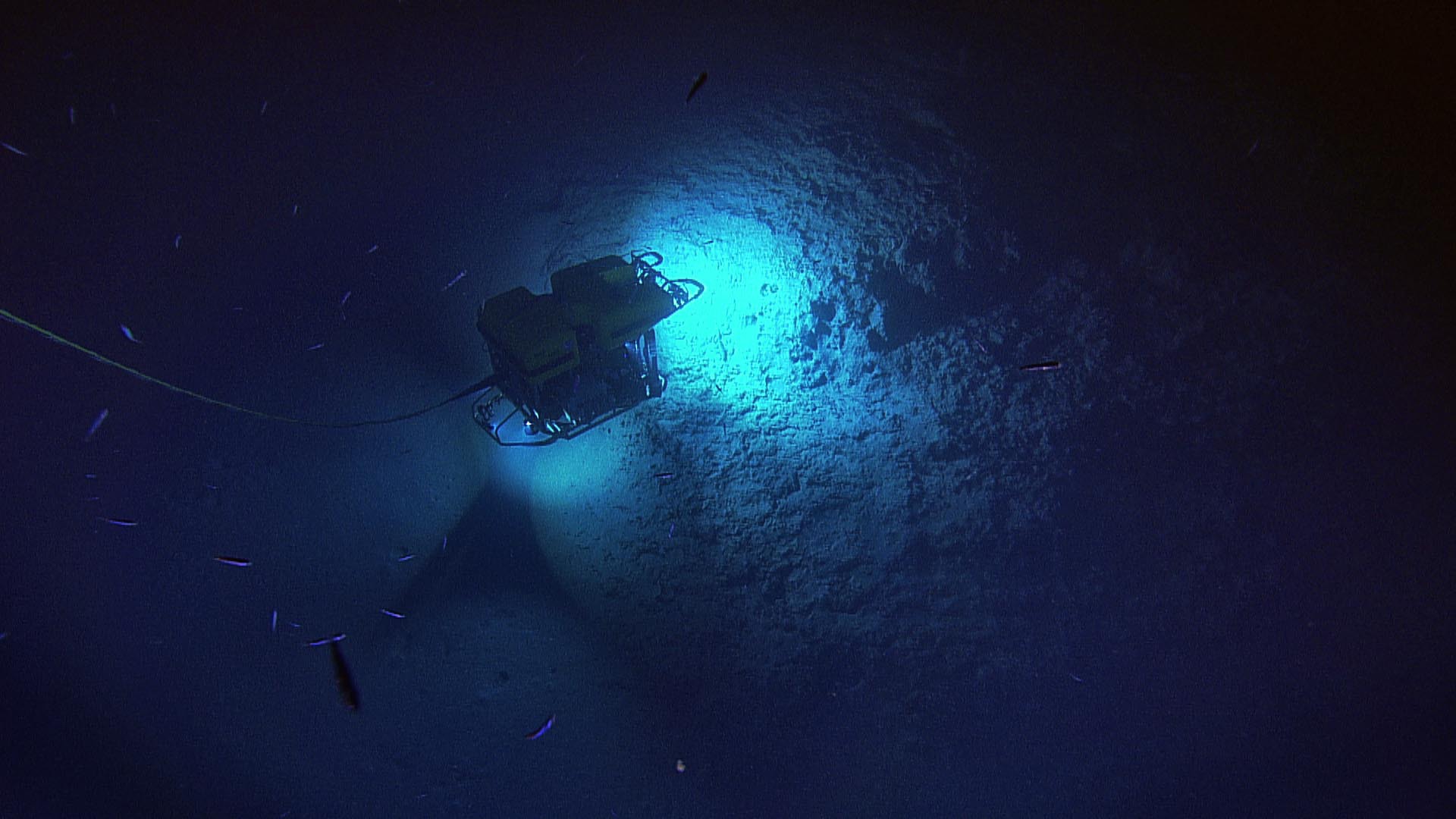From a technical standpoint, lighting systems are proven and well known technologies. Scuba divers can carry flashlights or glowsticks for night dives, and deep divers or deep diving submarines have also carried powerful lights down to the very bottom of the oceans. Harold Ballard uses ROV's with lights to take still pictures and video of the deep sea weeks he discovers, like the Titanic and Bismarck, and James Cameron used lights at the bottom of the Marianas trench, the deepest place on Earth.

But as TrEs-2b pointed out, why would you need a traffic light in the ocean? Even assuming that there is a lot of powered vehicles travelling under the oceans, it is a three dimensional environment, so you would actually need to consider "up" and "down" as well as vehicles travelling along the cardinal points.
Fortunately, there is already a system to deal with that sort of thing; the Air Traffic Control System. Pilots are provided bounded spaces to perform ascents and descents, and "lanes" separated by a great deal of distance to minimize the risk of mid air collisions.

For best performance there would need to be some sort of counterpart to an ATC (Air Traffic Control) centre. Since water is far denser than air, the UTC centre will have issues in identifying submarines and communicating with them (UTC's will have to be physically closer together than corresponding ATC's), but since most submarines will be travelling far slower than a jet aircraft, there will be more time to keep things organized.


